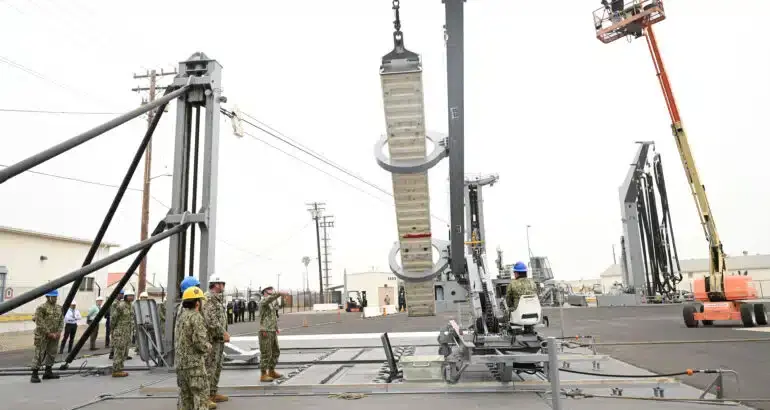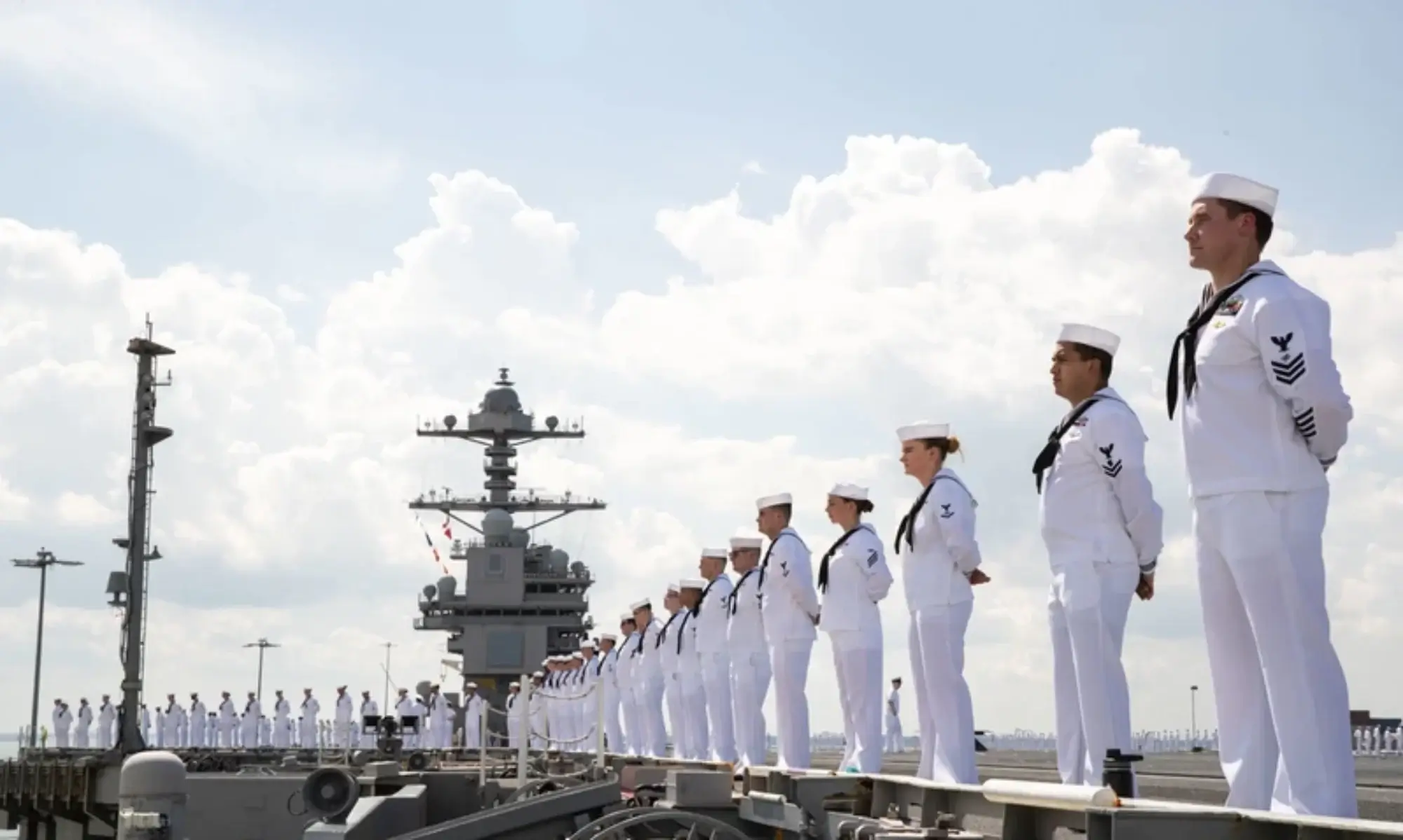
Introduction
In a significant advancement for naval warfare and logistics, the U.S. Navy has successfully completed the first ground-based test of its Transferrable Rearming Mechanism, (TRAM) which will enable U.S. Navy surface combatants to reload missile canisters into their Vertical Launch Systems (VLS) at sea using time-proven underway replenishment (UNREP). Conducted at the Naval Surface Warfare Center Port Hueneme Division, this test marks a pivotal moment in the Navy’s ongoing efforts to enhance its operational flexibility and readiness.
A Long-Awaited Breakthrough
The concept of reloading Vertical Launching System (VLS) cells while underway has been a priority for the Navy for over two decades. In 2023, Secretary of the Navy Carlos Del Toro highlighted the importance of this capability during his speech at the American Society of Naval Engineers Combat Systems Symposium. He emphasized that TRAM is the most viable solution to achieve this critical functionality.
Historically, the Navy relied on strike-down cranes installed on Ticonderoga-class cruisers and early Arleigh Burke-class destroyers. However, these cranes proved impractical and hazardous due to the challenges posed by relative motion at sea. TRAM addresses these issues, promising to revolutionize how the Navy replenishes its missile stocks while on deployment.
Enhancing Operational Flexibility
Rich Hadley, Director of the NSWC Port Hueneme Underway Replenishment Division, praised TRAM’s potential: “By solving key relative motion challenges, TRAM is a capability enabling reloading operations while underway in significant sea states. TRAM will greatly expand the fleet’s logistical flexibility, resilience, as well as volume and tempo of long-range fires.”
Traditionally, VLS reloading required warships to return to port, a process that could sideline vessels for extended periods. Given the evolving strategic landscape and the increasing importance of maintaining a constant naval presence, the ability to reload missiles at sea is more crucial than ever. This capability is especially significant in the context of great power competition in regions like the Indo-Pacific.
A Step Forward in Surface Warfare
The test, conducted with sailors from the Naval Expeditionary Logistics Support Group and USS Chosin (CG 65), demonstrated the practical application of TRAM. The system involves transferring missile canisters from a supply vessel to a warship using a crane, allowing ships to reload in a manner similar to refueling at sea. This method ensures the missile canisters are securely handled during the process, addressing safety concerns associated with the old strike-down cranes.
Steve Brock, Senior Advisor to the Secretary of the Navy, underscored the importance of this advancement: “This demonstration that you superbly delivered on the Secretary’s aggressive timeline sends a powerful message. This revolution in surface warfare will make our existing fleet even more formidable, both in sustained forward presence and lethality—and will create a powerful new near-term deterrent that will disrupt the strategic calculus of our adversaries.”
Looking Ahead
While the specifics of TRAM’s design remain under wraps, the success of the ground-based test at NSWC Port Hueneme sets the stage for its upcoming at-sea trial, scheduled for this fall. The data collected from this initial test will be instrumental in refining the system for operational use.
As the Navy continues to innovate and adapt to the demands of modern naval warfare, TRAM represents a significant leap forward in maintaining a ready and resilient fleet. By enabling ships to reload missiles while underway, the Navy not only enhances its operational capabilities but also sends a clear message of its commitment to maintaining maritime superiority in an increasingly complex global environment.
Stay tuned for further updates as the U.S. Navy prepares for the next phase of TRAM testing and moves closer to integrating this groundbreaking capability into its fleet operations.

